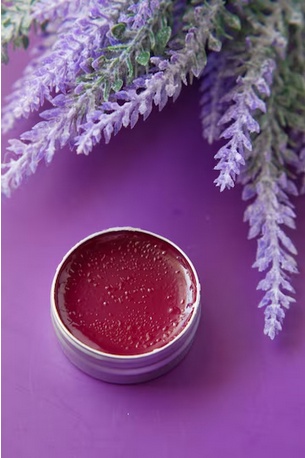Introduction
Bayberry wax, often referred to as the "queen of waxes," is a unique and natural substance that has been prized for centuries. Derived from the berries of the bayberry shrub, it possesses a subtle elegance that makes it stand out among waxes. In this comprehensive guide, we will explore the origins of bayberry wax, its traditional and modern uses, the process of harvesting and production, and its distinct qualities that have made it a coveted material for various applications.
The Origin and History of Bayberry Wax
Origins: Bayberry wax, scientifically known as Myrica cerifera, is native to North America and grows predominantly along the eastern coastal regions. It is produced by the small, grayish-white berries of the bayberry shrub.
Historical Significance: The history of bayberry wax is deeply rooted in early American culture. Native American tribes, particularly the Wampanoag and Narragansett, were among the first to discover the wax's properties. They taught the early settlers how to extract and use it. Bayberry wax became a valuable trade commodity during the colonial period and played a role in the American Revolution.
Traditional Uses: Bayberry wax had several traditional uses, including:
-
Candle Making: Bayberry wax was prized for candle making. Bayberry candles were known for their clean, sweet scent and their ability to burn slowly. However, due to the labor-intensive extraction process, these candles were considered a luxury.
-
Medicinal Applications: Native Americans used bayberry wax for medicinal purposes, believing it had healing properties. It was used in salves and ointments for various ailments.
-
Confectionery: Bayberry wax was used as a natural coating for hard candies, giving them a glossy finish and helping to preserve the sweets.
-
Trade and Economy: The extraction of bayberry wax was economically significant in early American colonies. It was a trade commodity, and some regions depended on its production for income.
Harvesting and Production Process
Harvesting: The process of obtaining bayberry wax involves the following steps:
-
Harvesting: Bayberry shrubs produce berries that ripen in late autumn. The berries are harvested by hand or with special rakes to ensure that the shrubs are not damaged in the process.
-
Drying: The harvested berries are spread out to dry for several weeks, allowing the moisture content to reduce and preserving the wax inside.
-
Separation: After drying, the wax-covered berries are separated from their seeds and twigs.
-
Boiling: The wax is extracted from the berries by boiling them in water. The heat causes the wax to melt and rise to the surface.
-
Skimming: The melted wax is carefully skimmed from the top of the boiling water. It is then strained and left to cool and solidify.
-
Reboiling and Filtering: The cooled wax is reboiled and filtered to remove impurities and any remaining water.
-
Solidification: The purified wax is allowed to cool and solidify, forming a greenish-gray substance that is genuine bayberry wax.
Modern-Day Applications
While bayberry wax is no longer as commonly used as it once was, it still finds its place in modern times, albeit in more specialized applications:
-
Aromatherapy Candles: Bayberry wax is occasionally used in aromatherapy candles, as it provides a sweet and pleasant scent when burned. These candles are marketed as natural and eco-friendly.
-
Medicinal and Herbal Products: Some herbal and medicinal products continue to use bayberry wax in ointments, salves, and creams due to its historical association with healing properties.
-
Historical Reenactments: Bayberry wax is sometimes used in historical reenactments to create authentic bayberry candles, paying homage to early American traditions.
-
Crafts and Art: Artists and craft enthusiasts occasionally use bayberry wax in encaustic painting, a technique that involves mixing pigments with molten wax.
Qualities and Unique Characteristics
Bayberry wax stands out due to its unique qualities and characteristics:
-
Clean and Elegant Scent: Bayberry wax has a subtle, clean, and sweet scent, making it ideal for candles and aromatherapy products. The scent is often described as fresh and earthy.
-
Natural and Renewable: Bayberry wax is a natural, renewable resource. As long as the harvesting is done responsibly, it can be a sustainable material.
-
Historical and Cultural Significance: The historical and cultural significance of bayberry wax adds to its allure. It connects us to a bygone era and a rich American heritage.
-
Niche Applications: While it may not be as commonly used as other waxes, bayberry wax finds its place in niche markets where its unique qualities are appreciated.
Challenges and Sustainability
Despite its unique qualities, bayberry wax faces certain challenges:
-
Labor-Intensive Production: The extraction process is labor-intensive and yields relatively small quantities of wax compared to other sources, such as beeswax or soy wax.
-
Habitat Vulnerability: Bayberry shrubs are vulnerable to habitat loss and climate change, making their cultivation and harvesting more challenging. Efforts are being made to explore sustainable methods for its production.
Conclusion
Bayberry wax, often called the "queen of waxes," is a natural substance with a rich history and unique qualities. Its traditional uses, including candle making, medicinal applications, and confectionery, have left a lasting legacy in American culture. While its production is labor-intensive and it faces challenges related to sustainability, the elegance of bayberry wax endures in niche applications, from aromatherapy candles to historical reenactments. Its subtle, clean scent and historical significance make it a material of enduring value and charm.


No comments yet